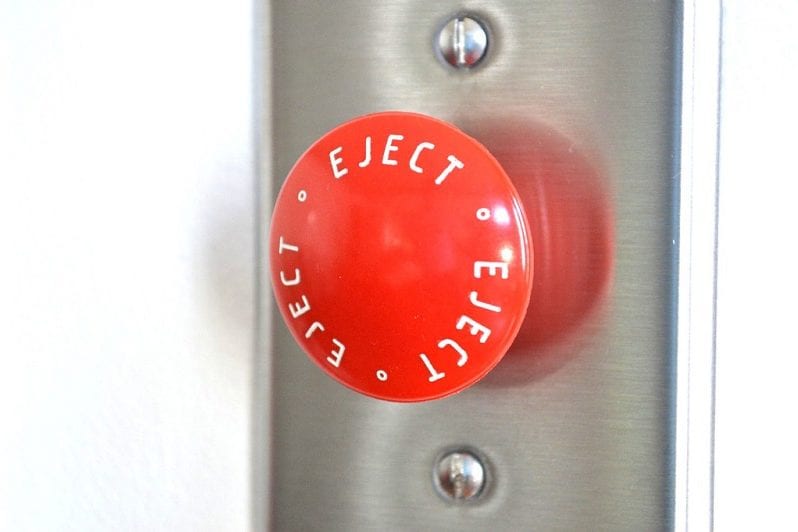HARTFORD, CT – In a stunning combination of social work finesse and aeronautical engineering, one local hospital’s ED has patented the first “Eject” button in medical history.

This progressive move spawned from a previously-explored Quality Improvement Initiative whereby challenging patients were identified with wristbands. In spite of this stigmatizing label, these patients have demonstrated the impervious resilience of a fighter pilot by returning to the ED for pain meds and head CT scans.
Dr. Kristina “Maverick” Patterson has applauded this technology since day 1. “We bring so many patients in by air, honestly I’m surprised we haven’t used this as an exit strategy,” she tells reporters at GomerBlog. The exit strategy, of course, being a swift aerial launch of repugnant persons from ED beds 1 to 8.
When an “ejectable patient” is first identified, they are asked to switch into a more comfortable gown. These more comfortable gowns have a built in parachute in the back that looks like a neck pillow attachment. After changing into the gown, any provider can hit the eject button which starts a sequence of events leading to the ceiling opening followed by a controlled explosion under the gurney that launches the patient 200+ yards up into the sky. The parachute should open and carry them far away from the hospital.
Hospital representatives say the technology has dramatically reduced ED provider time, thereby increasing the efficiency of “real” healthcare delivery. Despite the impressively high overhead, overall ED expenditures in the last quarter have dropped by a remarkable 45%. ED Chief Tom Skerritt has announced his next step to apply for NIH funding of an additional 28 “Aerobeds.”
No adverse events have been reported to date as parachutes are attached to patients before the ejection button is hit. Interns are even sent out into the field to retrieve the Aerobeds and parachutes afterwards.







